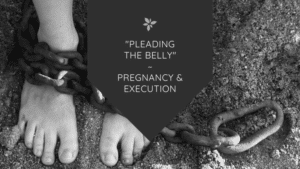Ever wonder about the history of the birth control pill and how it came to be?
Its history might surprise you – at one time it was illegal to even talk about birth control. But a small group of women fought for it, and one woman in particular stepped up to make the birth control pill happen.
What Makes “The Pill” So Special?
It’s true that different forms of contraception have been used for thousands of years. But most of them were unreliable, inconvenient, or downright dangerous.
Safer and more effective methods only began to be developed in the early 20th century. The birth control pill, an oral contraceptive containing the hormones estrogen and progestogen, was one of these.
“The pill” is used today by over 100 million women around the world.
Despite its modern popularity, its development was plagued by a lack of funding and interest from the start.
The Fight Against the Pill
In 1872, an innocent-seeming amendment to the Post Office Act sparked a series of similar laws across 24 of the United States.
These laws, collectively known as the Comstock Laws after anti-obscenity crusader Anthony Comstock, made it illegal to distribute obscene materials. The vague wording of the laws made it possible to use them to prohibit a wide variety of materials.

Anthony Comstock held very broad views in what he considered obscene or immoral, and was considered by many to be a vigilante who often overstepped his legal boundaries. He often enforced the laws that were his namesake, banning contraceptive materials and information about them, and also literature such as Ulysses, Broadway plays, and anatomy textbooks.
The ban on birth control lasted for decades, well into the 20th century.
During WWI, US soldiers were the only Allied soldiers sent overseas without condoms because they were banned under the Comstock laws. The Army ended up discharging more than 10,000 men due to their suffering from STDs.
The Comstock laws were challenged in court many times, but it wasn’t until the 1930s that the laws began to be overturned by a series of court decisions. Some Comstock laws were still on the books in several states until the 1970s.
Margaret Sanger, Birth Control Activist

Margaret Sanger is a controversial figure in history, famous as much for her support of eugenics (a popular movement before World War II) as for being the founder of the modern birth control movement.
While working as an obstetric nurse, she noted the connection between high fertility and high maternal deaths rates. To combat the issue, she opened the United States’ first birth control clinic in 1916, and was promptly arrested for distributing birth control and publications in violation of the Comstock laws. A package of diaphragms she requested from Japan was seized upon arriving in New York.
Margaret Sanger was one of the activists that challenged the Comstock laws in court.
Her 1936 court case, “United States v. One Package of Japanese Pessaries,” was one of the first to rule that the government could not interfere with doctors providing birth control to their patients. She is also well-known for helping to found Planned Parenthood, and for popularizing the term “birth control.” She chose the term for its emphasis on women having control over their own bodies, which she believed was an essential component of women’s freedom.
The Pill That Almost Wasn’t
By the 1930s, scientists had discovered that high doses of certain hormones inhibit ovulation. However, producing these hormones was prohibitively expensive. Reproductive physiologist Gregory Pincus was interested in researching other methods of synthesizing these hormones, but couldn’t find anyone to fund his research. Pharmaceutical companies, universities, and even the government showed no interest.
In the 1950s, Pincus met Margaret Sanger, who helped him to get a small amount of funding from Planned Parenthood. She mentioned Pincus and his research in a letter to Katharine McCormick, a close friend. Katharine McCormick traveled to meet Pincus and learn more about his research, and became frustrated at the shortage of funding for his work.
Related: Katharine McCormick, biologist & millionaire philanthropist

Luckily, McCormick was able to help. She had previously inherited estates totalling almost 50 million dollars from her mother and husband, and decided to use $2 million to fund Pincus’s research. This was 50 times the amount of his original funding from Planned Parenthood, and he was finally able to make substantial progress in his research.
The first commercially available birth control pill was approved by the FDA in 1960. By then, most of the Comstock laws had been struck down thanks to activists like Margaret Sanger. In the first three years the pill was available, it was used by half a million women across the United States. See: Katharine McCormick, biologist & millionaire philanthropist
Used by millions of women around the globe, the birth control pill has not only expanded the rights of women to control their own bodies, but has saved and improved millions of women’s lives.
Access to birth control has prevented hundreds of thousands of maternal deaths, and has been linked to improvements in women’s earnings and assets, their children’s schooling and health, and economic growth in developing countries.
Thanks to activists like Margaret Sanger and the generosity of Katharine McCormick, millions of women around the world today have access to the birth control pill.
Next, read about The Inspiring History of Women in Firefighting in the US or Fannie Lou Hamer, Civil Rights Activist.
Keri is a blogger and digital marketing professional who founded Amazing Women In History in 2011.






Leave a Reply